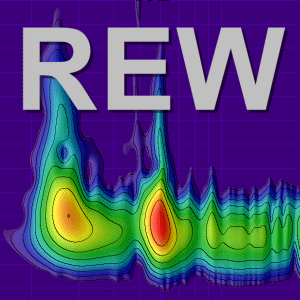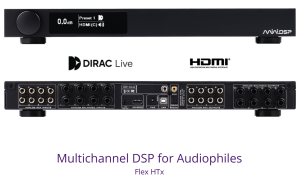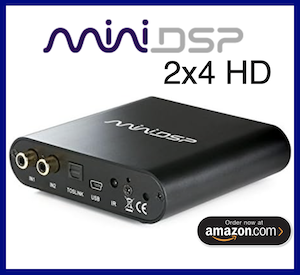John Mulcahy
REW Author
Thread Starter
- Joined
- Apr 3, 2017
- Posts
- 9,061
There are 4 mains areas of change in beta 30:
Stepped sine changes
The stepped sine dialog now offers options to step in frequency at a fixed level or step in level at a fixed frequency. Stepped level results can be plotted on the Distortion graph against either generator or input level and using multiple axis units. A stability test has also been added to monitor the input and begin averaging as soon as the input is sufficiently stable to minimise the waiting time between steps. There is also a distortion threshold beyond which stepped sine measurements will be stopped, distortion must drop below the threshold to arm it. Finally the stepped sine dialog is no longer modal, meaning the RTA window remains accessible for graph adjustments, but RTA controls are disabled to avoid changes that would interfere with the measurement.
Different axis types
Graphs showing measurement results now offer multiple Y axis unit types including dB SPL, dBFS, dBu, dBV, dBW, volts and watts. The watt values are based on the reference resistance specified in the RTA controls, while voltages are based on the full scale values configured on the RTA for input and the signal generator for output. There are also dBr and V/V axis options to provide a transfer function view based on the relative dBFS or voltage levels respectively.
RT60 Decay
The new RT60 Decay graph takes a novel frequency domain approach to RT60 calculation, providing a way to examine reverberation time behaviour at much higher frequency resolutions and with much narrower octave fractions than is usually possible, even at low frequencies. For details on that see the help page.
Graph controls
The graph controls were becoming quite cluttered for some graphs, so groups of controls have been moved to separate dialogs to alleviate that:
Other changes
Bug fixes
- Support for stepped sine measurements that step in level instead of frequency
- Support for different axis types for measurement results
- A new method of RT60 calculation using frequency domain processing
- Changes to the graph controls to move some groups of controls into separate dialogs
Stepped sine changes
The stepped sine dialog now offers options to step in frequency at a fixed level or step in level at a fixed frequency. Stepped level results can be plotted on the Distortion graph against either generator or input level and using multiple axis units. A stability test has also been added to monitor the input and begin averaging as soon as the input is sufficiently stable to minimise the waiting time between steps. There is also a distortion threshold beyond which stepped sine measurements will be stopped, distortion must drop below the threshold to arm it. Finally the stepped sine dialog is no longer modal, meaning the RTA window remains accessible for graph adjustments, but RTA controls are disabled to avoid changes that would interfere with the measurement.
Different axis types
Graphs showing measurement results now offer multiple Y axis unit types including dB SPL, dBFS, dBu, dBV, dBW, volts and watts. The watt values are based on the reference resistance specified in the RTA controls, while voltages are based on the full scale values configured on the RTA for input and the signal generator for output. There are also dBr and V/V axis options to provide a transfer function view based on the relative dBFS or voltage levels respectively.
RT60 Decay
The new RT60 Decay graph takes a novel frequency domain approach to RT60 calculation, providing a way to examine reverberation time behaviour at much higher frequency resolutions and with much narrower octave fractions than is usually possible, even at low frequencies. For details on that see the help page.
Graph controls
The graph controls were becoming quite cluttered for some graphs, so groups of controls have been moved to separate dialogs to alleviate that:
- On the Waterfall the settings for the view and colour scheme have been moved to separate dialogs
- On the Spectrogram the settings for the colour scheme have been moved to a separate dialog
- On All SPL controls the trace arithmetic controls and individual measurement actions have been moved to separate dialogs
- On the RTA controls the settings for distortion and view have been moved to separate dialogs
Other changes
- Did away with the plot normalised option for distortion graphs, happens automatically if dBr or percent selected as Y axis
- Changed SPL & Phase "Invert polarity" checkbox to a toggle button
- Added filter order selection for the RT60 and Filtered IR graphs, default is 6th order, max is 48th (filters are Butterworth bandpass)
- Added the equaliser sample rate in the heading of the equaliser selection panel
- Set Storm Audio EQ lower frequency limit to 16 Hz
- EQ panel waterfall colour scheme is only disabled if live waterfall updates are selected
- Removed the filtering controls from the Clarity graph, filter settings are controlled from the RT60 graph
- Revised controls layout on several graphs
- Added a coefficient format selection for the Generic equaliser Save filter coefficients action, with a choice of miniDSP or SigmaStudio formats
Bug fixes
- Bug fix: SPL & Phase graph trace offset and Add to data buttons were disabled for measurements without an impulse response
- Bug fix: Align IR start button in All SPL graph controls was disabled after using it
- Bug fix: Clock adjustment failed for new measurements
- Bug fix: Cal file parsing could be confused by content in comments
- Bug fix: The delay figure in the measurement notes for aligned measurements had the wrong sign
- Bug fix: Selecting the custom range option for the pink or white random noise with both the low cut and high cut boxes not selected would cause an exception
- Bug fix: An exception could occur if the file chooser file filter was set to "All files"














